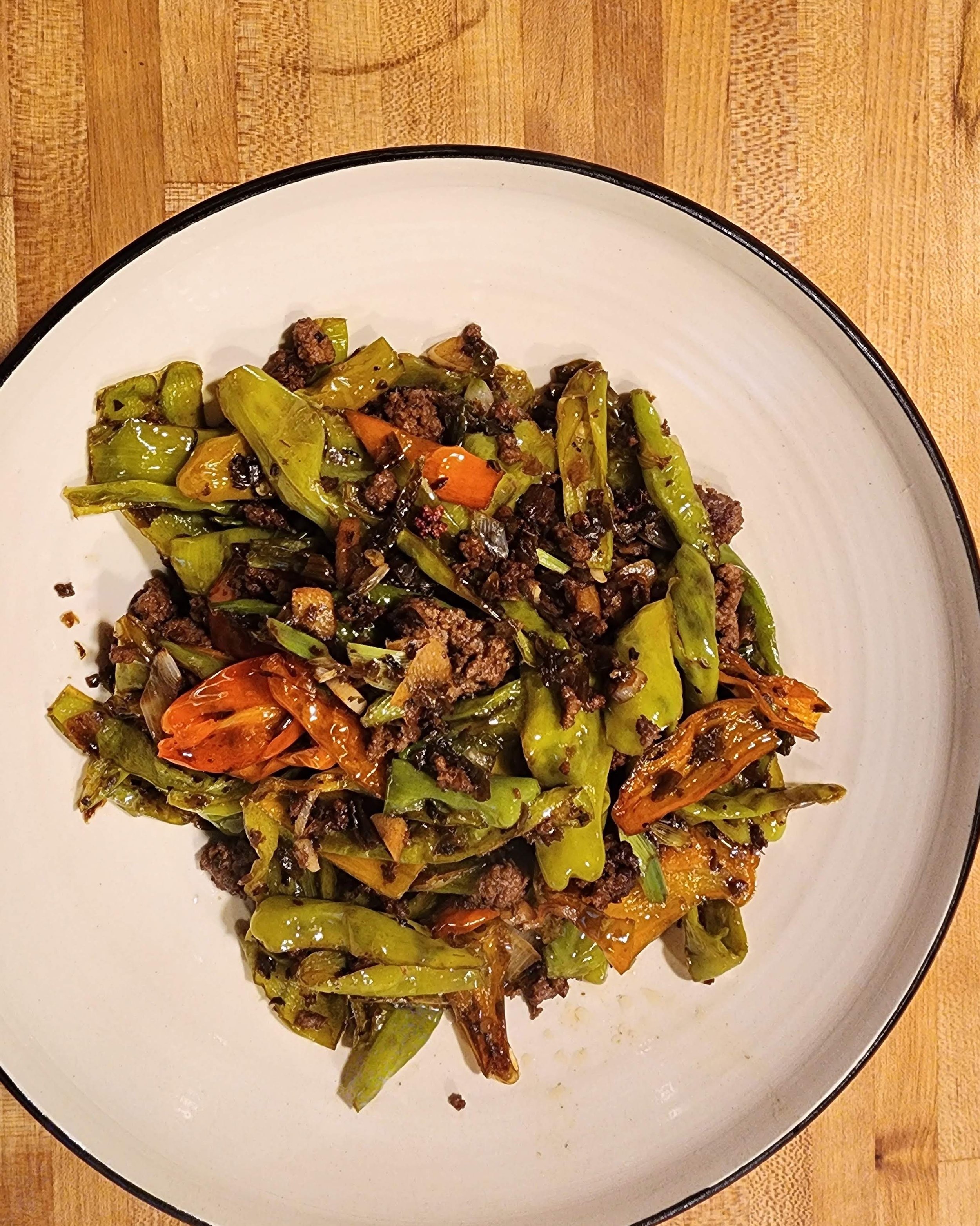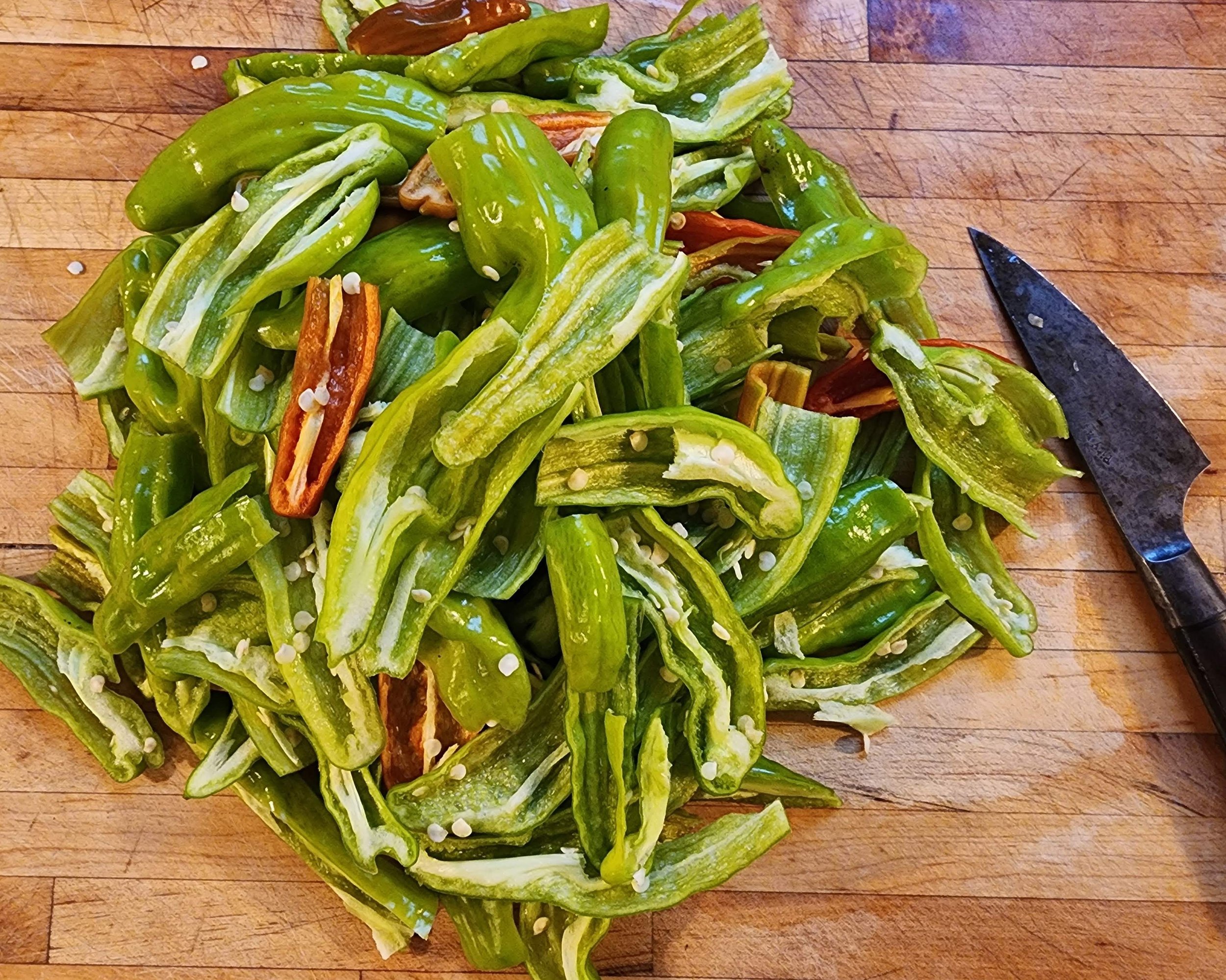Recipes
If you’ve ever only made pumpkin pie or other baked goods with canned pumpkin, you must try it with fresh! To prepare a pumpkin for use in any recipe that calls for cooked pumpkin:
Preheat the oven to 400° F. Cut the pumpkin in half through the stem end with the largest knife you have (carefully!). Remove the seeds and strings from the center with a large spoon and place the halves cut side down on a rimmed baking sheet. Add ¼ inch water to the pan and cover with aluminum foil. Bake until tender when pierced with a thin skewer, fork, or knife. Small pumpkins will be done in 30 to 45 minutes; larger ones will need more time. Once the pumpkin is cooked through, remove from the oven, allow to cool, and scoop the flesh out from the shell with a large spoon. Puree in a food processor or force it through a food mill. If the puree seems loose and wet, pour it into a colander lined with cheesecloth, bring the ends of the cheesecloth up over it, and cover with a cake pan and a 5-pound weight. Let the pumpkin drain for 30 to 60 minutes, or until it reaches the same consistency as canned pumpkin. A 5 or 6 pound pumpkin will yield about 4 cups of puree. (Adapted from The Joy of Cooking by Irma S. Rombauer, Marion Rombauer Becker and Ethan Becker)
Once you have your cooked pumpkin, use it in any recipe you like or in one of the following.
Pumpkin Pie
Adapted from The Joy of Cooking by Irma S. Rombauer, Marion Rombauer Becker and Ethan Becker
1 pie crust, home made or bought
2 to 3 large eggs (use 3 eggs for a soft, custardy filling, 2 for a firmer pie with a pronounced pumpkin flavor)
2 cups cooked pumpkin puree
1½ cups light cream or evaporated milk, or ¾ cup milk plus ¾ cup heavy cream
½ cup sugar
1/3 cup firmly packed light or dark brown sugar
1 tsp ground cinnamon
1 tsp ground ginger
½ tsp freshly grated or ground nutmeg
¼ tsp ground cloves or allspice
½ tsp salt
Position a rack in the center of the oven and preheat the oven to 375° F. Prepare a 9-inch pie pan with the pie crust, building up a high fluted rim. Whisk the eggs thoroughly in a large bowl, and then whisk in the remaining ingredients. Let the filling stand at room temperature while you warm the pie crust in the oven until it is hot to the touch. Remove the crust from the oven and pour the pumpkin mixture into the crust and bake until the center of the filling seems set but quivery, like gelatin, when the pan is nudged, 35 to 45 minutes. Let cool completely on a rack, then refrigerate for up to 1 day. Serve cold, at room temperature, or slightly warmed.
Pumpkin Cookies
1 cup butter
1 cup sugar
1 cup cooked pumpkin
1 egg
1 tsp vanilla
2 cups flour
1 tsp baking powder
½ tsp baking soda
½ tsp salt
1 tsp cinnamon
½ tsp all spice
1 cup raisins or chocolate chips
Preheat the oven to 375° F. Cream the butter and sugar. Add the pumpkin, egg, and vanilla and mix well. In a separate bowl, sift together flour, baking powder, baking soda, salt, cinnamon, and all spice. Combine the two mixtures and stir in the raisins or chocolate chips. Drop spoonfuls of the mixture onto a greased cookie sheet and bake for 15 minutes.
Pumpkin Bread
3½ cups flour
3 cups white sugar
2 tsp baking soda
1½ tsp salt
1 tsp cinnamon
1 tsp nutmeg
1 tsp cloves
1 cup canola oil
2/3 cup water
2 cups cooked pumpkin
4 eggs
1 cup chocolate chips (or more to taste)
Preheat the oven to 350° F. In a large bowl, mix together the flour, sugar, baking soda, salt, and spices. In a separate bowl whisk together the oil, water, pumpkin and eggs. Slowly add the flour mixture to the wet mixture, whisking until smooth. Fold in the chocolate chips. Pour batter into 2 greased bread pans, filling each only about half way. Bake for about 45 minutes.
Pumpkin Saag
Adapted from Veganomicon by Isa Chandra Moskowitz & Terry Hope Romero
3 lbs sugar pumpkin
3 tbsp peanut oil
1 large white onion, diced finely
4 cloves garlic, minced
1½ tsp garam masala
¼ tsp ground cinnamon
½ tsp salt
1/8 tsp cayenne
1 cup water
1-inch cube fresh ginger, peeled
10 oz fresh spinach, washed well and chopped coarsely
Juice of ½ lime
Preheat the oven to 350° F. Carve out the top of the pumpkin to remove the stem. Use your strongest knife to cut the pumpkin in half along the vertical. Remove the seeds (reserve them to toast sometime) and scrape out the strings with a spoon Place the pumpkin halves, cut side down, on a lightly greased baking sheet. Bake for about 45 minutes, until a fork can easily pierce the flesh. Let the pumpkin cool completely. Peel away the skin and then chop the pumpkin up into 1-inch chunks.
Preheat a soup pot over medium-high heat. Sauté the onions in the peanut oil for about 5 minutes. Add the garlic and sauté for 2 to 3 minutes more, or until everything is honey brown. Add the pumpkin and cook until heated through, about 3 minutes. Add the spice and salt, and grate the ginger directly into the pot (use a microplane grater, if possible). Add the water and cook for about 5 minutes, mixing often. Use your mixing spatula to mush the pumpkin up a bit, but leave some pieces chunky. Add the spinach in 3 or 4 minutes, mixing well after each additions. Cook for 10 more minutes, stirring often. Add the lime; taste and adjust the salt. This is best if it’s had time to sit for a while. Serve with basmati rice and some sort of chutney.










